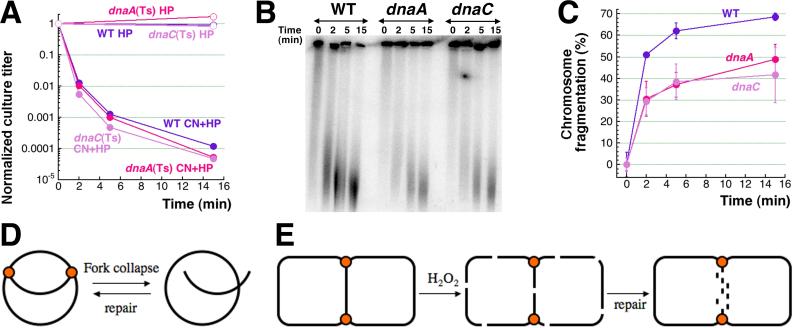Fig. 8. CN + H2O2-induced killing and chromosome fragmentation in dnaA(Ts) and dnaC(Ts) mutant cells at 42°C.
A. Kinetics of death of non-replicating dnaA46 and dnaC2 cultures in the AB1157 background (compared to exponential AB1157 cultures) upon treatment with 3 mM CN + 2 mM H2O2. The AB1157, dnaA46(Ts) and dnaC2(Ts) mutants were pre-grown at 28°C for two hours and then shifted to 42°C for two hours, following which the CN + H2O2 treatment was carried out at 42°C.
B. A representative pulsed-field gel demonstrating the catastrophic chromosomal fragmentation induced in non-replicating dnaA46 and dnaC2 cultures by the 3 mM CN + 2 mM H2O2 treatment (compared to the fragmentation observed in exponentially growing CN + H2O2 treated AB1157 cells). The AB1157, dnaA46(Ts) and dnaC2(Ts) mutants were pre-grown at 28°C for two hours and then diluted 20 times and shifted to 42°C for two hours, followed by the CN + H2O2 treatment at 42°C.
C. Quantification of the kinetics of chromosomal fragmentation upon treatment with 3 mM CN + 2 mM H2O2 (from several gels like in “B”) in non-replicating diluted dnaA46 and dnaC2 cultures, compared with WT cells.
D. Replication fork collapse and recombinational repair at the chromosome level.
E. Replication-independent double-strand breaks all over the replicating chromosome and their subsequent repair in the duplicated parts. Chromosome is presented as a theta-replicating structure with replication forks identified by the orange dots. Note the impossibility of recombinational repair in the unreplicated part of the chromosome, which is instead degraded, killing the cell.

